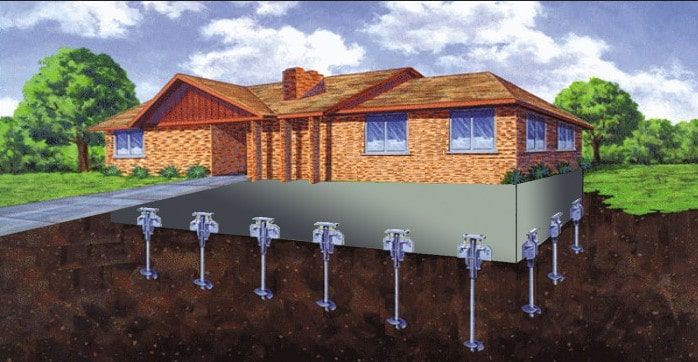Foundation Repair Contractor Answers Frequently Asked Questions
If you are at home thinking about foundation repair or you are just curious to know more about a certain foundation problem- what is wrong, who repairs the problem, how will it be repaired, then you should read on through this article. Global Reblocking experts answer the frequently asked questions regarding foundation repair.
Q-What’s the overall cost of repairing a foundation problem in Melbourne?
The costs of repairing a foundation vary greatly. The overall cost is determined after assessing several factors. The main ones are:
- Type of the foundation. Some foundations are easier to repair than other types. For instance, poured concrete ones are easier to fix than brick or stone ones.
- Area and extent of damage. A more extensive damage will be more expensive to repair.
- Accessibility for equipment and repair crew. If the access area is limited, then it will be more difficult to repair the damage and this will increase the costs of repair.
Q- Which are the techniques used to repair a concrete foundation?
Concrete slabs that have shifted either upwards or downwards, or have cracks, will require stabilization using brackets and piers or through mud jacking.
Some steel piers are fitted alongside or beneath the slab and connect it to a more stable bedrock or soil. Most slab repair projects take a day or two to complete. Read about more innovative methods here.
Q- Who would I contact to fix a stone or brick foundation in Melbourne Vic?
Contact an expert who has many years of experience with the older types of houses. Older houses were often made of stone foundations.
Some problems with stone foundations may be fixed while others would require replacement with newer foundation materials such as concrete blocks or poured concrete. Regardless of the problem with your stone foundation, an experienced contractor will be in a position to fix it.
Q- How are shifting retaining walls repaired?
Some soil behind such a wall might be removed to make it possible to pull back the wall into position. Some drain lines can also be installed to ensure water does not collect behind the walls. Pulling back the wall into place is done using hydraulic jacks and helical anchors.
Anchors are screwed into the earth and pushed further deep using helical plates that are welded onto pier shafts. Upon reaching a stable soil, a bracket will be attached on a pier. The wall will then be jacked into place and afterwards, the bracket is fixed permanently.
Q- What repair services can I get to fix foundation cracks?
If you are a handy homeowner, you can easily repair minor cracks, or hire a home remodeling expert. However, larger cracks that are at least ¼ inch wide indicate that your foundation has shifted. Such large cracks require being assessed and fixed by a repair expert.
Cracks that reappear after repair with a sealant or patching mortar indicate that there is a structural problem with the foundation. Hence, contact an expert immediately you notice big cracks or cracks that reoccur after repair.
Q- What solutions are available for fixing cracked concrete or brick walls?
These types of repairs can all be fixed by an expert who specializes in repairing foundations. Merely filling cracks in brick or concrete walls is not enough.
It is crucial to determine the cause of the cracks. If settlement or unstable soil issues exist, then the filled cracks may recur until such a time that the main structural issues are fixed.
Q- Who should I call to fix a cellar foundation?
A cellar was an early type of basement foundations. Cellar foundations are generally made of brick or stone. Repairing such a foundation is quite challenging since the available space tends to be dark, damp, and cramped.
A rubble stone wall is also likely to be constructed with improper footings and weak mortar. Hence, only hire an expert who has experience in repairing historic houses.
Q- What does underpinning involve?
This is a repair process that involves installing some steel piers adjacent to or below the foundation elements such as footings, slabs, or walls that have shifted or settled. This process is also referred to as piering. It assists in stabilizing a shifted foundation due to unstable soil.
Piers are drilled deep into the soil until they reach a stable soil or bedrock. Steel brackets are used to connect the foundation to the piers. Underpinning may also involve fitting grade beams or footings beneath the foundation to make it more stable.
Q- How can I get a reliable repair expert?
Foundation repair experts are professionally trained to fix many foundation problems. There can be serious consequences if the repair process is done improperly. Hence, ensure you only go for a certified expert who is approved by construction organizations, says Jimmy Williams, an experienced Chattanooga general contractor.
Q- What does foundation pile or pier driving involve?
The terms piers and piles are used to describe tubes, pillars, or posts that are pushed into the earth below a foundation to stabilize or reinforce the foundation.
The piles are used when the soil conditions are no longer fit enough to support the structure. The main two types of piles or piers used are helical piers and giant spike piers. Both are manufactured from corrosion resistant steel.
Q- How is an unleveled and bouncy floor fixed and made firmer?
Older homes were often constructed using small floor joists. Such joists make floors bouncy. Settling of the foundation floor or the beam frame that supports the mid span can make the floor uneven.
These settlement issues can be fixed by an expert. Bouncy floors can be made firm by jacking the floor section that has dipped and fixing larger joists onto the undersized ones.
Get more information about Melbourne foundation repairs.



